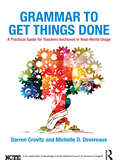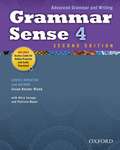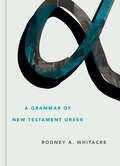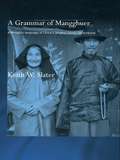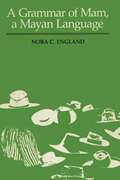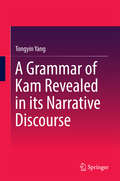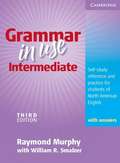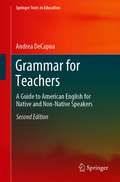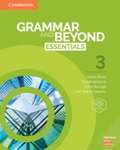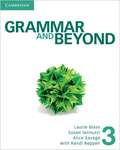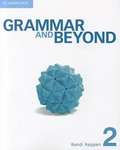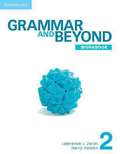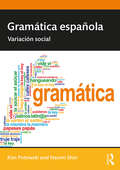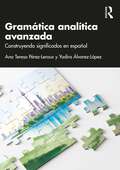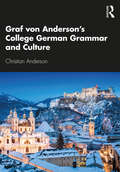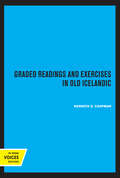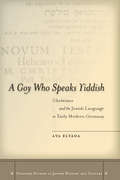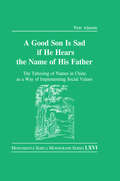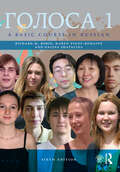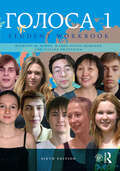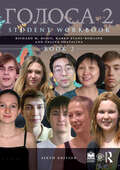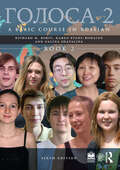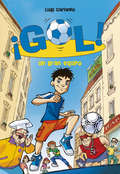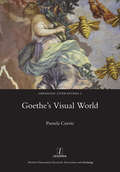- Table View
- List View
Grammar to Get Things Done: A Practical Guide for Teachers Anchored in Real-World Usage
by Darren Crovitz Michelle D. DevereauxCO-PUBLISHED BY ROUTLEDGE AND THE NATIONAL COUNCIL OF TEACHERS OF ENGLISH Grammar to Get Things Done offers a fresh lens on grammar and grammar instruction, designed for middle and secondary pre-service and in-service English teachers. It shows how form, function, and use can help teachers move away from decontextualized grammar instruction (such as worksheets and exercises emphasizing rule-following and memorizing conventional definitions) and begin considering grammar in applied contexts of everyday use. Modules (organized by units) succinctly explain common grammatical concepts. These modules help English teachers gain confidence in their own understanding while positioning grammar instruction as an opportunity to discuss, analyze, and produce language for real purposes in the world. An important feature of the text is attention to both the history of and current attitudes about grammar through a sociocultural lens, with ideas for teachers to bring discussions of language-as-power into their own classrooms.
Grammar Sense 4
by Susan KesnerGrammar Sense is a four-level discourse-based grammar series which focuses on the connection between form, meaning, and use of English structures. The series is based on the fundamental premise that English grammar is learnable and teachable if it is systematically organized and explained. Grammar Sense implements linguistic and applied linguistic research on how, where, when, and why native speakers use English structures, and how non-native speakers learn them. This series provides learners with a true understanding of how grammar is used in authentic contexts. Grammar is presented in discourse rather than in isolated sentences which allows the students to understand English grammar in real life situations.
A Grammar of New Testament Greek (Eerdmans Language Resources)
by Rodney A. WhitacreA reader&’s guide to the morphology and syntax of Koine Greek From the pen of a seasoned instructor of biblical Greek, this book functions as both an essential resource for second-year students and an invaluable asset for all readers as they continue to hone and deepen their linguistic skills. It begins with a basic overview of the language for new learners and for those looking for a brief refresher before moving into nuanced matters of morphology and syntax. Whitacre&’s aim is ultimately to help readers understand the subtleties of the language on the pages of the New Testament; thus, he engages with the biblical text both grammatically and exegetically, so that readers can experience its full power and beauty. Including numerous illustrative examples throughout and several useful appendices at the end, A Grammar of New Testament Greek is indispensable both as a textbook and as a reference for all readers of the Greek New Testament—and other texts written in Koine, such as the Septuagint and the Apostolic Fathers.
A Grammar of Mangghuer: A Mongolic Language of China's Qinghai-Gansu Sprachbund (Routledge Studies in Asian Linguistics)
by Keith W. SlaterThis book is a grammar of Mangghuer, a Mongolic language spoken by approximately 25,000 people in China's northwestern Qinghai Province. Mangghuer is virtually unknown outside China, and no grammar of Mangghuer has ever been published in any language. The book's primary importance is thus as a systematic grammatical description of a little-known language. The book also makes a significant contribution to comparative Mongolic studies. In addition to the synchronic description of Mangghuer, extensive comparison with other Mongolic languages is included, demonstrating the genetic relationship of Mangghuer within that family. In the course of describing Mangghuer linguistic structures, the book also examines issues of interest to linguistic typologists.
A Grammar of Mam, a Mayan Language
by Nora C. EnglandThis is the first full-length reference grammar of Mam, a Mayan language spoken today by over 400,000 people in the western highlands of Guatemala and the state of Chiapas, Mexico. The result of over three years of extensive fieldwork in Guatemala, A Grammar of Mam, a Mayan Language is based on the dialect of Mam spoken by 12,000 people in San Ildefonso Ixtahuacan in the department of Huehuetenango, Guatemala. England organizes A Grammar of Mam according to two complementary principles: to analyze Mam following basically traditional levels of grammatical description and to present material in such a way that the background information necessary for understanding each topic of discussion shall have been previously provided. Accordingly, England's analysis of the sound system and morphophonemic processes of Mam is followed by a description of the characteristics of root, inflectional, and derivational morphology. Chapters on phrase structure precede two chapters on sentence-level syntax. A Grammar of Mam is of particular interest in analyzing a Mayan language that is both syntactically and morphologically ergative and that is innovative in the direction of strengthening the ergative system. Indeed at all levels of linguistic organization Mam is innovative, and for this reason it is uniquely interesting both historically and theoretically.
A Grammar of Kam Revealed in Its Narrative Discourse
by Tongyin YangThe Kam language of China possesses fifteen tones - more than any other language. Yet it has long been neglected as an area of research, especially from the perspective of discourse analysis. This study initiates the exploration of the interface between grammar and discourse by examining various aspects of Kam narrative discourse, and using a functional approach to reveal its structural properties. It also introduces the mechanism for phonological and syntactic variations, as well as classifier variants and sentence-final particles (SFPs) in discourse and word order variations. Finally, it discusses the influence of social setting on narrative structure and offers the most up-to-date ethnological and social information about the community.
Grammar In Use: Intermediate Student's Book With Answers
by Raymond Murphy William R. SmalzerIdeal for students preparing for the TOEFL r test or other standard examinations, the new edition of this popular North American English grammar title offers even more support, with a larger format to include more explanation and practice, eight new units on phrasal verbs, and 10 pages of Additional Exercises. The book is available with and without a CD-ROM, which includes additional practice exercises, progress reports, interactive games, and a link to the Cambridge Dictionaries Online. You can even create your own tests to review the language learned. The workbook provides students with further practice opportunities.
Grammar for Teachers
by Andrea DecapuaUpdated and revised with more examples and expanded discussions, this second edition continues the aim of providing teachers with a solid understanding of the use and function of grammatical structures in American English. The book avoids jargon and presents essential grammatical structures clearly and concisely. Dr. DeCapua approaches grammar from a descriptive rather than a prescriptive standpoint, discussing differences between formal and informal language, and spoken and written English. The text draws examples from a wide variety of authentic materials to illustrate grammatical concepts. The many activities throughout the book engage users in exploring the different elements of grammar and in considering how these elements work together to form meaning. Users are encouraged to tap into their own, often subconscious, knowledge of grammar to consciously apply their knowledge to their own varied teaching settings. The text also emphasizes the importance of understanding grammar from the perspective of English language learners, an approach that allows teachers to better appreciate the difficulties these learners face. Specific areas of difficulties for learners of English are highlighted throughout.
Grammar and Beyond Essentials Level 3 Student's Book with Online Workbook (Grammar And Beyond Essentials Series)
by Laurie Blass Susan Lannuzzi Alice SavageGrammar and Beyond Essentials Level 3 Student's Book with Online Workbook teaches grammar in a real-world context that students can apply outside the classroom. Clear grammar presentation and practice helps learners understand the form, meaning, and usage of each grammar point. Students study and practice correcting the most common mistakes in the Avoid Common Mistakes sections. QR codes give easy access to audio at point of use. Each Student's Book comes with access to an Online Workbook, which provides self-grading practice and assessment.
Grammar and Beyond 3
by Laurie Blass Susan Iannuzzi Alice Savage Randi Reppen Kathryn O'DellBased on extensive research, Grammar and Beyond ensures that students study accurate information about grammar and apply it in their own speech and writing. Learners study the grammar in a realistic text and through corpus-informed charts and notes. The exercises provide practice in reading, writing, listening, and speaking. Students learn to avoid common mistakes, based on a corpus of learner language. Each unit concludes with a 'Grammar for Writing' section, in which students apply the grammar in an extended writing task.
Grammar and Beyond (Level #2)
by Randi Reppen Deborah GordonGrammar and Beyond is a research-based and content-rich grammar series for beginning- to advanced-level students of North American English. The series focuses on the grammar structures most commonly used in North American English, with an emphasis on the application of these grammar structures to academic writing. The series practices all four skills in a variety of authentic and communicative contexts. It is designed for use both in the classroom and as a self-study learning tool.
Grammar and Beyond: Level 2 Workbook
by Lawrence J. Zwier Harry HoldenStudents learn real-world language. Grammar and Beyond is based on extensive corpus research into the ways that grammar is used in the real world. The series takes this research base and focuses students' attention on the most relevant and accurate information. Students then immediately apply what they have learned in speaking and writing. While the series places special emphasis on grammar for writing, all four skills are covered thoroughly. As students prepare to write, they practice editing common mistakes-based on an extensive collection of student writing. Then, they apply the grammar directly in a writing task, making a clear connection between what they study and how they write.
Gramática española: Variación social
by Kim Potowski Naomi L. ShinGramática española: Variación social introduces intermediate to advanced students of Spanish to the main grammatical features of the language in a way that emphasizes the social underpinnings of language. Written entirely in Spanish, this unique approach to the study of grammar guides students in an examination of how Spanish grammar varies depending on place, social group, and situation. Students examine why some varieties of Spanish are considered prestigious while others are not, drawing on current and historical sociopolitical contexts, all while learning grammatical terminology and how to identify categories and constructions in Spanish. This is an excellent resource for students at level B1 or higher on the Common European Framework for Languages, and Intermediate High to Advanced High on the ACTFL proficiency scale.
Gramática analítica avanzada: Construyendo significados en español (Analytic Grammars for Advanced Learners and Teachers)
by Ana Teresa Pérez-Leroux Yadira Álvarez-LópezLa Gramática analítica avanzada: Construyendo significados en español ofrece una cobertura descriptiva amplia de los temas gramaticales fundamentales del español, a la vez que proporciona un tratamiento detallado de las estrategias de análisis necesarias para que los lectores puedan desarrollar sus destrezas analíticas y su propio pensamiento gramatical. Esta gramática no asume conocimiento previo de la lingüística. Para ayudar al lector, los materiales están organizados desde los conceptos más básicos a los más complejos. Las herramientas analíticas que acompañan los diferentes temas pueden aplicarse a nuevos fenómenos que surjan durante el proceso de aprendizaje del español como segunda lengua, ofreciéndoles a los lectores la garantía de poder seguir aprendiendo. Cada capítulo contiene una síntesis, tablas de resumen y ejercicios que sirven para repasar los conceptos estudiados.La Gramática analítica avanzada será de utilidad tanto para los estudiantes avanzados de español como segunda lengua que busquen profundizar su comprensión de la gramática del español, así como para hablantes nativos y futuros maestros que deseen reforzar su conocimiento de los fundamentos de la gramática descriptiva.Gramática analítica avanzada: Construyendo significados en español provides a comprehensive descriptive coverage of core grammatical topics in the Spanish language while simultaneously offering an in-depth analytic treatment to support readers in developing their own grammatical thinking.This grammar assumes no previous familiarity with linguistics and organizes the materials from the more basic to more complex concepts to help readers understand the building blocks of the language. The analytic toolkit provided for the topics covered within the book can be applied to novel phenomena encountered in the second language acquisition process, setting readers up for lifelong independent learning. Each chapter includes a chapter summary, summary tables, and exercises to reinforce and review the concepts covered.Gramática analítica avanzada will be useful to advanced speakers of Spanish as a second language seeking to deepen their conscious understanding of Spanish grammar as well as native speakers and future teachers who wish to strengthen their foundational knowledge of descriptive grammar.
Graf von Anderson's College German Grammar and Culture
by Christian AndersonGraf von Anderson’s College German Grammar and Culture is a beginners’ textbook (CEFR A1-B2, ACTFL novice low – intermediate low) for the German language for college students and for those engaged in self-study with popular software programs and apps. In addition to illuminating profiles of key places and individuals who helped shape German history from Roman times to the present day, the textbook also includes important cultural briefings. Chapter by chapter the book delineates the scope of the German language, beginning with “ich”, and moving on to subjects and verbs. Later chapters introduce cases, indirect and direct objects, prepositions, tenses, moods, and adjectives. Each chapter includes challenging exercises, and an answer key is provided. The rich cultural component in each chapter includes a travel guide, a historical snapshot, several musical selections, and a German text to read. This book is a straightforward and thorough introduction to the basic structures of German grammar and provides an overview of selected highlights of German culture to engage and enthuse.
Graded Readings and Exercises in Old Icelandic
by Kenneth ChapmanThis title is part of UC Press's Voices Revived program, which commemorates University of California Press’s mission to seek out and cultivate the brightest minds and give them voice, reach, and impact. Drawing on a backlist dating to 1893, Voices Revived makes high-quality, peer-reviewed scholarship accessible once again using print-on-demand technology. This title was originally published in 1964.
A Goy Who Speaks Yiddish: Christians and the Jewish Language in Early Modern Germany
by Aya ElyadaThis book explores the unique phenomenon of Christian engagement with Yiddish language and literature from the beginning of the sixteenth century to the late eighteenth century. By exploring the motivations for Christian interest in Yiddish, and the differing ways in which Yiddish was discussed and treated in Christian texts,A Goy Who Speaks Yiddishaddresses a wide array of issues, most notably Christian Hebraism, Protestant theology, early modern Yiddish culture, and the social and cultural history of language in early modern Europe. Elyada's analysis of a wide range of philological and theological works, as well as textbooks, dictionaries, ethnographical writings, and translations, demonstrates that Christian Yiddishism had implications beyond its purely linguistic and philological dimensions. Indeed, Christian texts on Yiddish reveal not only the ways in which Christians perceived and defined Jews and Judaism, but also, in a contrasting vein, how they viewed their own language, religion, and culture.
Good Son is Sad If He Hears the Name of His Father: The Tabooing of Names in China as a Way of Implementing Social Values (Monumenta Serica Monograph Ser.)
by Piotr AdamekWhen in 1775 the scholar Wang Xihou compiled a dictionary called Ziguan , he wrote, for illustrative purposes, the personal names of Confucius and the three emperors Kangxi, Yongzheng and Qianlong in the introduction. In oversight, he recorded their complete names. This accidental writing of a few names was condemned by Emperor Qianlong as an unprecedented crime, rebellion and high treason. Wang Xihou was executed, his property confiscated and his books were burnt. His family was arrested and his sons and grandsons were killed or sent as slaves to Heilongjiang. It is surprising what an enormous impact the tabooing of names (bihui ) had on Chinese culture. The names of sovereigns, ancestors, officials, teachers, and even friends were all considered taboo, in other words it was prohibited to pronounce them or to record them in writing. In numerous cases characters identical or similar in writing or pronunciation were often avoided as well. The tabooing of names was observed in the family and on the street, in the office and in the emperor's palace. The practice of bihui had serious consequences for the daily lives of the Chinese and for Chinese historiography. People even avoided certain places and things, and refused to accept offices. They were punished and sometimes even killed in connection with the tabooing of names. The bihui custom existed as an important element of Chinese culture and was perceived as significant by Chinese and foreigners alike. It was crucial for implementing social values and demonstrating the political hierarchy. The present work A Good Son Is Sad if He Hears the Name of His Father is a systematic study of Chinese name-tabooing customs, which until now have been relatively little explored in Western-language Sinological studies. It attempts to provide a long-term perspective on the changing dynamics of tabooing and elucidates various aspects related to the fascinating topic of tabooing of names.
Golosa: A Basic Course in Russian, Book One
by Richard Robin Karen Evans-Romaine Galina ShatalinaГОЛОСА: A Basic Course in Russian (Sixth Edition), strikes a true balance between communication and structure. It takes a contemporary approach to language learning by focusing on the development of functional competence in the four skills (listening, speaking, reading, and writing), as well as the expansion of cultural knowledge. It also provides comprehensive explanations of Russian grammar along with the structural practice students need to build accuracy. The sixth edition of this bestselling communicatively based text for beginning Russian has been updated by putting a greater focus on contemporary culture and simplified, visual grammar explanations that will better engage students. Books One and Two are a basic proficiency-oriented complete course in Russian language designed to bring students to the ACTFL Intermediate range in speaking (A2/B1 on the CEFR scale) after 200–250 classroom contact hours, or two years of academic study. The program also covers the basic morphology of Russian (declension, case government, conjugation). The program has been the bestseller as a college Russian textbook through five editions since 1993. It is designed to be the principal textbook for a two-year college sequence running at 3 to 5 hours a week — a total of 150 to 250 hours of face-to-face instruction at the college level, double at the high school level. ГОЛОСА is divided into two books (Book One and Book Two) of ten units each. The units are organized thematically, and each unit contains dialogs, texts, exercises, and other material designed to enable students to read, speak, and write about the topic, as well as to understand simple conversations. The systematic grammar explanations and exercises enable students to develop a conceptual understanding and partial control of all basic Russian structures. This strong structural base enables students to accomplish the linguistic tasks and prepares them for further study of the language. Print and eTextbooks are accompanied by a Student Workbook and a rich companion website (www.routledge.com/cw/golosa) offering audio and video material and fully integrated exercises to use alongside the text. The companion website, powered by Lingco, is fully available for separate purchase from Lingco. Teachers can preview the new companion websites and create their courses. For resources on how to set up and customize your course, please visit the Help Center on the Lingco Language Labs website at www.lingco.io. It includes articles that explain how the platform works and what you can do with it.Students may join their teacher’s course on Lingco and will be able to enter their access code or purchase access at any point in the 14-day grace period that begins on the first date of access. Students receive 12 months of access that begins after a free 14-day grace period. Multimedia (audio and video) for Golosa is found exclusively on the companion website.
Golosa: Student Workbook, Book One
by Richard Robin Karen Evans-Romaine Galina ShatalinaГОЛОСА: A Basic Course in Russian (Sixth Edition), strikes a true balance between communication and structure. It takes a contemporary approach to language learning by focusing on the development of functional competence in the four skills (listening, speaking, reading, and writing), as well as the expansion of cultural knowledge. It also provides comprehensive explanations of Russian grammar along with the structural practice students need to build accuracy. The sixth edition of this bestselling communicatively based text for beginning Russian has been updated by putting a greater focus on contemporary culture and simplified, visual grammar explanations that will better engage students. Books One and Two are a basic proficiency-oriented complete course in Russian language designed to bring students to the ACTFL Intermediate range in speaking (A2/B1 on the CEFR scale) after 200–250 classroom contact hours, or two years of academic study. The program also covers the basic morphology of Russian (declension, case government, conjugation). The program has been the bestseller as a college Russian textbook through five editions since 1993. It is designed to be the principal textbook for a two-year college sequence running at 3 to 5 hours a week – a total of 150 to 250 hours of face-to-face instruction at the college level, double at the high school level. ГОЛОСА is divided into two books (Book One and Book Two) of ten units each. The units are organized thematically, and each unit contains dialogs, texts, exercises, and other material designed to enable students to read, speak, and write about the topic, as well as to understand simple conversations. The systematic grammar explanations and exercises enable students to develop a conceptual understanding and partial control of all basic Russian structures. This strong structural base enables students to accomplish the linguistic tasks and prepares them for further study of the language. Print and eTextbooks are accompanied by a Student Workbook and a rich companion website (www.routledge.com/cw/golosa) offering audio and video material and fully integrated exercises to use alongside the text. The companion website, powered by Lingco, is fully available for separate purchase from Lingco. Teachers can preview the new companion websites and create their courses. For resources on how to set up and customize your course, please visit the Help Center on the Lingco Language Labs website at www.lingco.io. It includes articles that explain how the platform works and what you can do with it. Students may join their teacher’s course on Lingco and will be able to enter their access code or purchase access at any point in the 14-day grace period that begins on the first date of access. Students receive 12 months of access that begins after a free 14-day grace period. Multimedia (audio and video) for ГОЛОСА is found exclusively on the companion website.
Golosa: Student Workbook, Book Two
by Richard M. Robin Karen Evans-Romaine Galina ShatalinaГОЛОСА: A Basic Course in Russian, Book Two (Sixth Edition), takes a contemporary approach to language learning by focusing on the development of functional competence as well as the expansion of cultural knowledge. The sixth edition of this bestselling communicatively based text for Russian has been updated by putting a greater focus on contemporary culture and simplified, visual grammar explanations that will better engage students. The program also covers the basic morphology of Russian (declension, case government, conjugation). The program has been a bestseller as a college Russian textbook through five editions since 1993. Following on from Golosa Book One, Golosa Book Two is divided into ten units. Organised thematically, each unit contains dialogs, texts, exercises, and other material designed to enable students to read, speak, and write about the topic, as well as to understand simple conversations. The systematic grammar explanations and exercises enable students to develop a conceptual understanding and partial control of all basic Russian structures. This strong structural base enables students to accomplish the linguistic tasks and prepares them for further study of the language. Book Two is designed to bring students to the ACTFL Intermediate range in speaking (A2/B1 on the CEFR scale). Free audio and video resources are also available at www.routledge.com/9780367612825, including the Instructor Resources. Print and eTextbooks are accompanied by a Student Workbook and a rich companion website (www.routledge.com/cw/golosa) offering audio and video material, instructor resources and fully integrated exercises to use alongside the text. The companion website, powered by Lingco, is available for separate purchase from Lingco. Teachers can preview the new companion websites and create their courses. For resources on how to set up and customize your course, please visit the Help Center on the Lingco Language Labs website at www.lingco.io. It includes articles that explain how the platform works and what you can do with it. Students may join their teacher’s course on Lingco and will be able to enter their access code or purchase access at any point in the 14-day grace period that begins on the first date of access. Students receive 12 months of access that begins after a free 14-day grace period.
Golosa: A Basic Course in Russian, Book Two
by Richard M. Robin Karen Evans-Romaine Galina ShatalinaГОЛОСА: A Basic Course in Russian, Book Two (Sixth Edition), takes a contemporary approach to language learning by focusing on the development of functional competence as well as the expansion of cultural knowledge. The sixth edition of this bestselling communicatively based text for Russian has been updated by putting a greater focus on contemporary culture and simplified, visual grammar explanations that will better engage students. The program also covers the basic morphology of Russian (declension, case government, conjugation). The program has been a bestseller as a college Russian textbook through five editions since 1993. Following on from Golosa Book One, Golosa Book Two is divided into ten units. Organised thematically, each unit contains dialogs, texts, exercises, and other material designed to enable students to read, speak, and write about the topic, as well as to understand simple conversations. The systematic grammar explanations and exercises enable students to develop a conceptual understanding and partial control of all basic Russian structures. This strong structural base enables students to accomplish the linguistic tasks and prepares them for further study of the language. Book Two is designed to bring students to the ACTFL Intermediate range in speaking (A2/B1 on the CEFR scale). Free audio and video resources are also available at www.routledge.com/9780367612825, including the Instructor Resources. Print and eTextbooks are accompanied by a Student Workbook and a rich companion website (www.routledge.com/cw/golosa) offering audio and video material, instructor resources and fully integrated exercises to use alongside the text. The companion website, powered by Lingco, is available for separate purchase from Lingco. Teachers can preview the new companion websites and create their courses. For resources on how to set up and customize your course, please visit the Help Center on the Lingco Language Labs website at www.lingco.io. It includes articles that explain how the platform works and what you can do with it. Students may join their teacher’s course on Lingco and will be able to enter their access code or purchase access at any point in the 14-day grace period that begins on the first date of access. Students receive 12 months of access that begins after a free 14-day grace period.
Golosa: A Basic Course in Russian, Book Two
by Richard M. Robin Karen Evans-Romaine Galina ShatalinaГОЛОСА: A Basic Course in Russian, Book Two (Sixth Edition), takes a contemporary approach to language learning by focusing on the development of functional competence as well as the expansion of cultural knowledge.The sixth edition of this bestselling communicatively based text for Russian has been updated by putting a greater focus on contemporary culture and simplified, visual grammar explanations that will better engage students. The program also covers the basic morphology of Russian (declension, case government, conjugation). The program has been a bestseller as a college Russian textbook through five editions since 1993.Following on from Golosa Book One, Golosa Book Two is divided into ten units. Organised thematically, each unit contains dialogs, texts, exercises, and other material designed to enable students to read, speak, and write about the topic, as well as to understand simple conversations. The systematic grammar explanations and exercises enable students to develop a conceptual understanding and partial control of all basic Russian structures. This strong structural base enables students to accomplish the linguistic tasks and prepares them for further study of the language. Book Two is designed to bring students to the ACTFL Intermediate range in speaking (A2/B1 on the CEFR scale).Print and eTextbooks are accompanied by a Student Workbook and a rich companion website (www.routledge.com/cw/golosa) offering audio and video material, instructor resources and fully integrated exercises to use alongside the text. The companion website, powered by Lingco, is available for separate purchase from Lingco. Teachers can preview the new companion websites and create their courses. Free audio and video resources are also available at www.routledge.com/cw/golosa, including the Instructor Resources. For resources on how to set up and customize your course, please visit the Help Center on the Lingco Language Labs website at www.lingco.io. It includes articles that explain how the platform works and what you can do with it. Students may join their teacher’s course on Lingco and will be able to enter their access code or purchase access at any point in the 14-day grace period that begins on the first date of access. Students receive 12 months of access that begins after a free 14-day grace period.
Gol 1. Un gran equipo
by Luigi Garlando3, 2, 1... ¡El espectáculo acaba de empezar! Bajo las órdenes de un míster algo peculiar, el señor Gaston Champignon, ocho niños y niñas han formado un equipo de fútbol de lo más disparatado. Se llaman Cebolletas y les espera una temporada repleta de grandes emociones (¡y muchísimo sudor!). Pero, antes de empezar, los ocho cracks ya han aprendido la lección más importante: para ganar solo hace falta ¡DIVERTIRSE!
Goethe's Visual World
by Pamela CurrieGoethe's ideas on colour and imagery crossed many borderlines: those of artistic processes and philosophical aesthetics, art history and colour theory, together with the science of perception. This investigation into his writings ranges across art from Antiquity, the Renaissance and the eighteenth century, as well as exploring the centrality of these issues to Goethe's literary work. Questions find answers, but also raise new questions. This systematic sequence of essays, originally written between 1999 and 2011, appeals to readers in all these separate areas, while drawing together their essential coherence.
